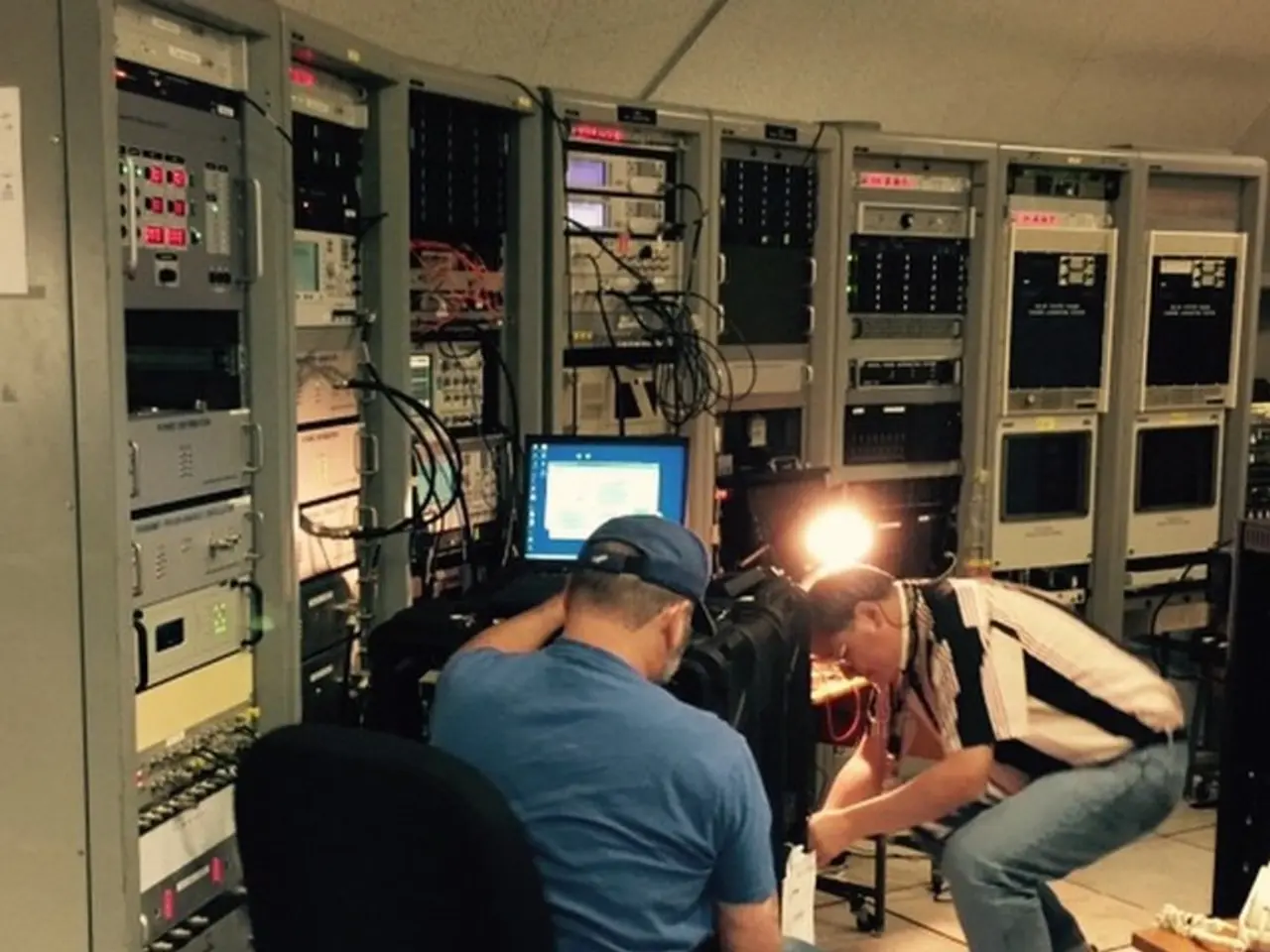Working Experts Warn of Significant Connection Between Remote Work and Burnout
In the wake of the pandemic, remote working has become the new norm for many, leading to a surge in stress levels for numerous individuals. However, a surprising finding emerges when comparing stress levels among skilled trade workers and professional occupations.
The nature of work and stressors plays a significant role in this disparity. Professional occupations, such as technology roles, are under constant pressure to upskill, adapt to rapid innovation, and maintain an "always-on" culture. This relentless pace often leads to mental fatigue and burnout, with 58% of tech workers reporting high burnout symptoms[1]. In contrast, skilled trades involve tangible, hands-on work with clearer, more defined tasks, contributing to lower mental stress levels.
Work environment and autonomy also favour skilled trades. These roles frequently provide workers with more control and defined job responsibilities, reducing the stress from workload ambiguity and blurred work/life boundaries[2].
Career pathways and job satisfaction also contribute to the lower burnout risk experienced by skilled trade workers. The trades offer clear advancement and entry paths, often with apprenticeships that combine earning and learning. This creates a strong sense of purpose and mastery, which is linked to lower burnout risk[2][3]. Professional roles, on the other hand, often have more abstract career progression with ongoing pressure to maintain credentials and productivity, increasing stress.
Financial considerations and stability also play a role. Although lifetime earnings for those in skilled trades can approximate or even exceed some college graduates, trades avoid student debt stress. The financial pressure associated with education costs and job market competition in professional careers can add to stress levels[3].
Social and leadership support is another factor. Many professional workers report a gap in leadership support for mental health, which exacerbates stress levels. Skilled trades may benefit from more immediate, visible leadership or mentorship in apprenticeship settings, potentially improving stress management[1].
While trades may face challenges like higher entry-level unemployment in some roles and physical demands, the combination of clear job roles, financial advantages, and more tangible work outcomes likely contributes to their relatively lower stress compared to professional occupations[4].
In 2023/24, professional occupations, such as accountants, lawyers, teachers, and doctors, had the highest number of stress, anxiety, and depression reports, with 2,740 cases per 100,000 employees. This is significantly higher than the 720 cases per 100,000 skilled trade workers recorded during the same period[5].
If left unchecked, chronic stress can escalate into more serious conditions such as panic attacks or emotional burnout. To combat this, strategies such as creating a clear end to the workday with a small ritual, exercise, good sleep, a balanced diet, exposure to sunlight and fresh air, writing a shutdown list of tasks for the next day and the current day's accomplishment, and the Pomodoro Technique (focusing for 25 minutes and taking a 5-minute break) are recommended to prevent burnout[6].
Nilou Esmaeilpour, a clinical director and registered clinical counsellor, has worked with clients who developed anxiety symptoms or depression due to prolonged work pressure, tight deadlines, and no real downtime. She observes positive changes in conversations around burnout, with some employers starting to adapt by offering days off related to mental wellbeing and wellness programs[7].
References: [1] Gallup. (2021). State of the Global Workplace Report 2021. https://www.gallup.com/workplace/374400/state-global-workplace-report-2021.aspx [2] American Psychological Association. (2020). Work and well-being: Stress in America. https://www.apa.org/news/press/releases/2020/06/work-well-being-stress-in-america [3] National Institute for Occupational Safety and Health. (2019). The Total Worker Health® Approach: Protecting and Promoting Worker Safety and Health. https://www.cdc.gov/niosh/twh/about/index.html [4] U.S. Bureau of Labor Statistics. (2020). Occupational Employment Statistics. https://www.bls.gov/oes/current/oes_stru.htm [5] Health and Safety Executive. (2023). Stress, anxiety, or depression statistics in Great Britain, 2023/24. https://www.hse.gov.uk/statistics/causdis/stress/2023.pdf [6] Mind. (2021). Tips to prevent burnout. https://www.mind.org.uk/information-support/work-and-money/work-and-mental-health/tips-to-prevent-burnout/ [7] Society for Human Resource Management. (2021). Employers' response to mental health during the pandemic. https://www.shrm.org/resourcesandtools/hr-topics/behavioral-health/pages/employers-response-to-mental-health-during-the-pandemic.aspx
- The surge in stress levels among professional occupations, such as technology roles, can be attributed to the constant pressure to upskill, adapt to rapid innovation, and maintain an "always-on" culture, which contributes to mental fatigue and burnout.
- On the flip side, skilled trade workers, who perform hands-on work with clearer, more defined tasks, experience lower mental stress levels due to the nature of their work, autonomy, and the social and leadership support they often receive.




